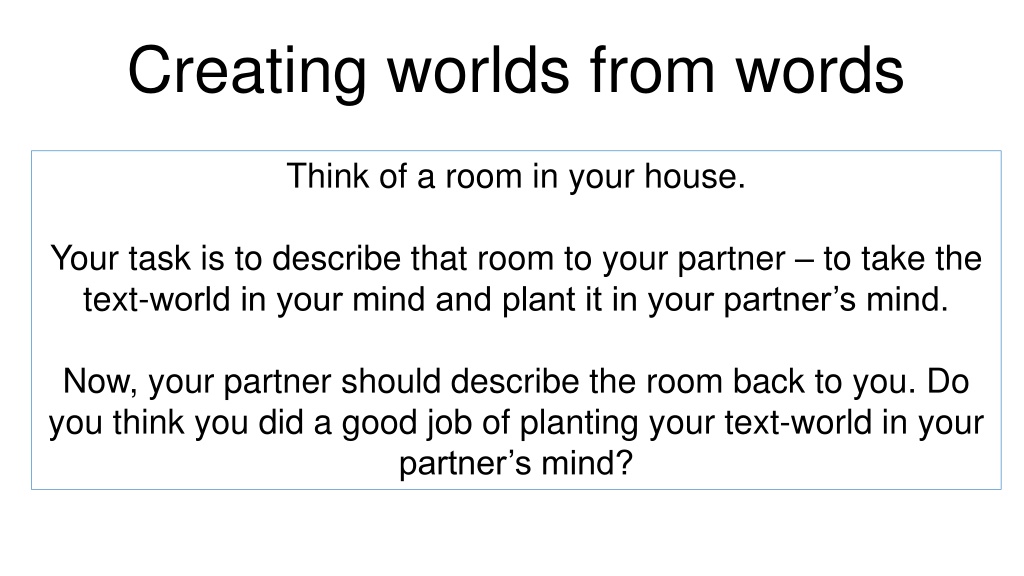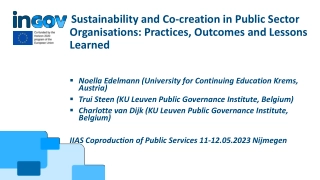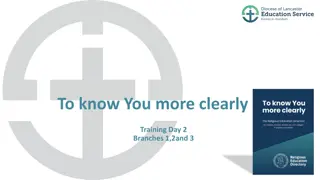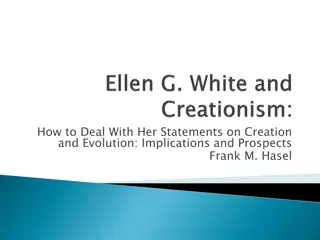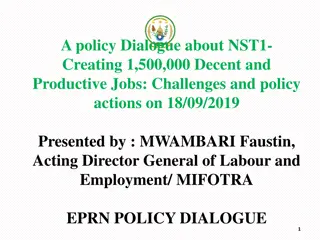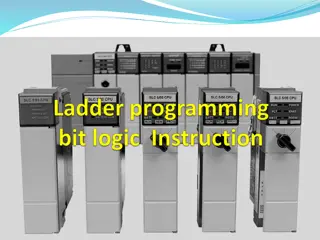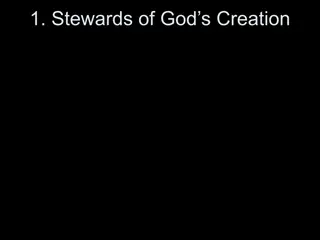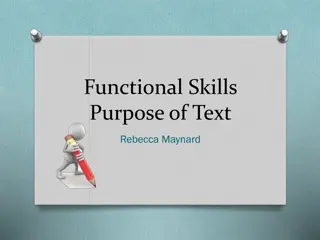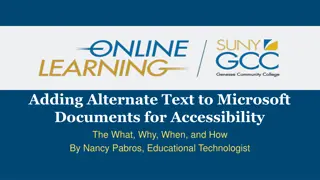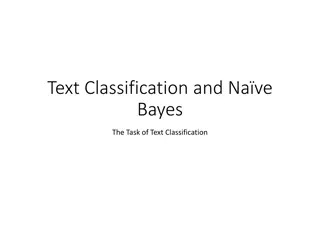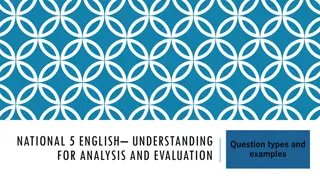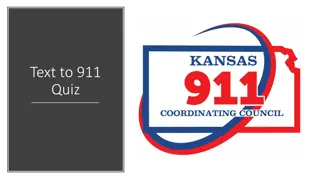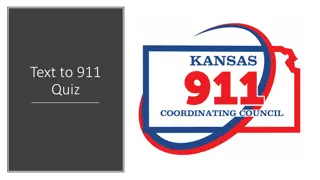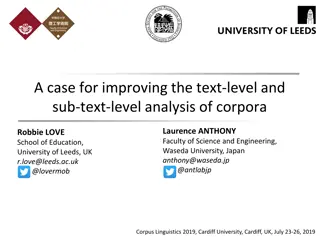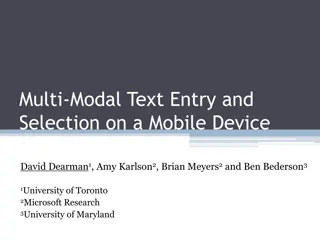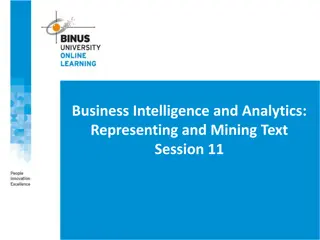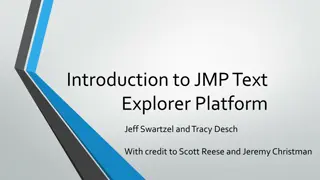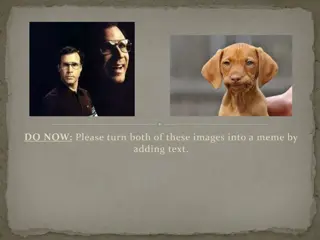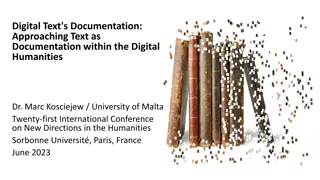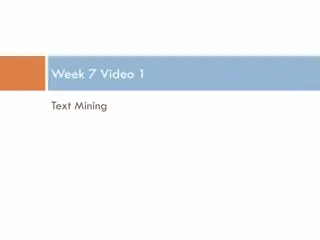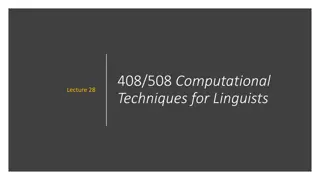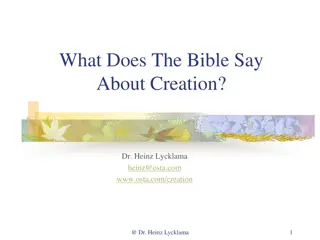Text-World Creation: Challenges and Insights
Exploring the intricate process of planting text-worlds in readers' minds while facing the challenges writers encounter. Delving into the activation of bundles of knowledge for words and deciphering layers in literary portrayals like Linda Pastan's "To a Daughter Leaving Home."
Download Presentation

Please find below an Image/Link to download the presentation.
The content on the website is provided AS IS for your information and personal use only. It may not be sold, licensed, or shared on other websites without obtaining consent from the author. Download presentation by click this link. If you encounter any issues during the download, it is possible that the publisher has removed the file from their server.
E N D
Presentation Transcript
Creating worlds from words Think of a room in your house. Your task is to describe that room to your partner to take the text-world in your mind and plant it in your partner s mind. Now, your partner should describe the room back to you. Do you think you did a good job of planting your text-world in your partner s mind?
What are some of the challenges a writer faces in trying to create a text-world in their reader s mind? Reader s text- world Writer s text- world
Bundles of knowledge When we read, we use background knowledge of the world to help us understand language. Words don t just exist by themselves they trigger other bits of relevant information. For example: 4 walls Roof Windows Garden Safe, warm, cosy Family Pets HOUSE
What bundles of knowledge for each word are activated now? Why? BEACH RAIN AIRPORT RESTAURANT
The man sat in the armchair by the fire reading a book. What age is the man? How is he dressed? What kind of material is the armchair made of? What colour is it? What time of day is it? What kind of book is he reading? Is it dark or light in the room? The old man sat in the red leather armchair by the fire one evening wearing a suit and reading an old hardback book in the dark. Which version asks the reader to imagine more? What bundles of knowledge does the writer ask you to activate in the first version?
To a Daughter Leaving Home By Linda Pastan When I taught you at eight to ride a bicycle, loping along beside you as you wobbled away on two round wheels, my own mouth rounding in surprise when you pulled ahead down the curved path of the park, I kept waiting for the thud of your crash as I sprinted to catch up, while you grew smaller, more breakable with distance, pumping, pumping for your life, screaming with laughter, the hair flapping behind you like a handkerchief waving goodbye. What bundles of knowledge does this poem activate for you? What do you think the poet is saying about parent-child relationships?
Transforming texts You are going to produce a new poem, using the diagram below to help. Write from the perspective of the parent, the daughter or a different character we did not meet in the original. You could choose to go back or forward in time. You will then be asked to provide a short commentary, where you reflect on your own choices. DAUGHTER marriage jobs house school children siblings grand-children conflict birth and beyond death and beyond PARENT present memory, regrets, history hopes, fears, future
Before you create your fictional world, think: What kind of text-world do you want to send your readers? What do you want your readers to feel, when they read your poem? Where do you want your reader to be? Inside the world of the poem, as a participant? Or outside, looking in?
Commentary Now, write a short paragraph explaining: The kind of text-world you were trying to create, and how you did that The significance of a few individual words/phrases: why did you choose them? How is your text-world different/similar to the original one? What bundles of knowledge did you want your readers to try and draw on when they read your poem?
